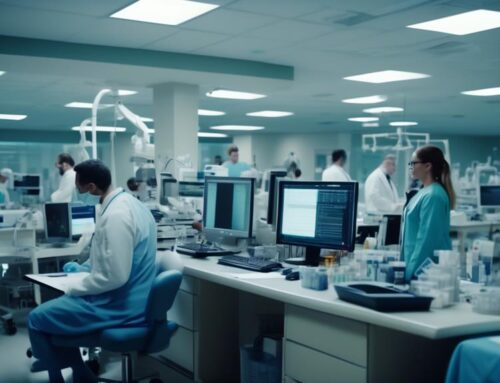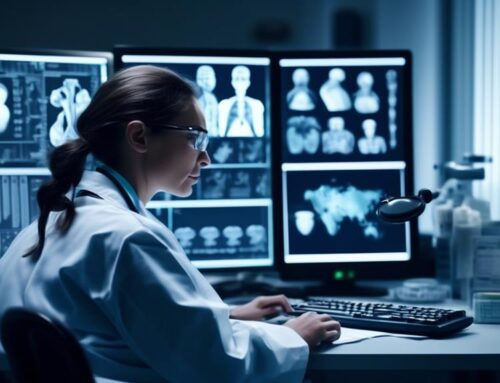Imagine a bustling hospital ward, filled with the sounds of beeping machines and hurried footsteps. Amidst the chaos, technology silently weaves its way into the fabric of medical data entry, revolutionizing the way information is captured and stored. But how exactly has technology influenced this crucial aspect of healthcare? From the digitization of health records to the automation of processes, there are numerous ways in which technology has transformed medical data entry. So, fasten your seatbelts and prepare to uncover the remarkable ways in which technology has reshaped the landscape of healthcare.
Digital Health Records
Digital health records revolutionize the way medical data is stored, accessed, and shared, improving efficiency and patient care. One of the key benefits of digital health records is enhanced patient privacy. With paper records, there is always a risk of unauthorized access or loss of sensitive information. Digital records, on the other hand, can be protected through robust security measures, such as encryption and user authentication. This ensures that only authorized healthcare professionals can access the data, thus safeguarding patient privacy.
Another advantage of digital health records is data interoperability. Traditionally, medical data was stored in separate silos, making it difficult for different healthcare providers to exchange information. This lack of interoperability often led to fragmented care and medical errors. With digital records, information can be easily shared and accessed across different healthcare settings. This promotes seamless coordination of care and enables healthcare providers to make more informed decisions.
Furthermore, digital health records allow for efficient and accurate documentation. With electronic templates and automated data entry, healthcare professionals can quickly record patient information, reducing the risk of errors and improving the overall quality of care. Additionally, digital records can be easily searched and analyzed, enabling healthcare organizations to identify trends, improve outcomes, and conduct research more effectively.
Improved Accuracy
By utilizing digital health records, healthcare professionals can significantly enhance the accuracy of medical data entry. This technology has revolutionized the way medical information is recorded and stored, reducing errors and enhancing precision in the process.
One of the key benefits of digital health records is the elimination of illegible handwriting. Illegible handwriting has long been a source of frustration and potential errors in medical data entry. With digital records, healthcare professionals can type information directly into the system, ensuring that it is clear and easily readable. This not only reduces the chances of misinterpretation but also improves the overall accuracy of the data being entered.
Furthermore, digital health records incorporate various built-in checks and validations to ensure the accuracy of the information being entered. These systems can flag potential errors or inconsistencies, prompting the healthcare professional to review and correct them before finalizing the entry. This real-time feedback significantly reduces the likelihood of errors going unnoticed and enhances the precision of the data being recorded.
In addition, digital health records allow for the integration of decision support tools. These tools provide healthcare professionals with real-time alerts and reminders, helping them make informed decisions and avoid potential errors. For example, if a medication being prescribed has a known interaction with another medication the patient is currently taking, the system will alert the healthcare professional, reducing the chances of prescribing potentially harmful combinations.
Faster Data Entry
With the improved accuracy provided by digital health records, healthcare professionals can now focus on the efficiency of their data entry process. The integration of technology has streamlined workflows, allowing for faster data entry and increased efficiency in healthcare settings.
One way technology has improved data entry speed is through the use of electronic forms. These forms can be pre-populated with patient information, eliminating the need for manual entry of repetitive data. Additionally, digital health records allow for the use of templates and macros, which can automatically populate fields based on predefined criteria. This reduces the time spent manually inputting data and minimizes the risk of errors.
Furthermore, voice recognition technology has revolutionized data entry in healthcare. Instead of typing out patient information, healthcare professionals can now dictate their notes, which are then automatically transcribed into the system. This not only saves time but also allows for real-time documentation, improving the accuracy and timeliness of patient records.
Automated Processes
Automated processes in medical data entry have revolutionized the efficiency and accuracy of healthcare documentation. With the introduction of technology, cumbersome manual tasks have been replaced with automated systems that streamline workflows and reduce errors. Here are three ways in which automated processes have transformed medical data entry:
- Integration of electronic health records (EHR): Automated systems allow for seamless integration of patient data into EHRs, eliminating the need for manual data entry. This not only saves time but also reduces the risk of transcription errors.
- Real-time data validation: Automated processes can instantly validate entered data, flagging any inconsistencies or errors. This ensures that accurate and reliable information is recorded, enhancing the quality of healthcare documentation.
- Intelligent data extraction: Through the use of advanced algorithms, automated processes can extract relevant information from various sources, such as lab reports or medical images. This eliminates the need for manual extraction, saving time and reducing the likelihood of errors.
Secure Data Storage
The implementation of automated processes in medical data entry has not only improved efficiency and accuracy but has also necessitated the development of secure data storage systems. With the increasing reliance on technology, the need to protect sensitive patient information has become paramount. Data encryption plays a crucial role in ensuring data privacy and security.
Data encryption involves converting data into a code that can only be accessed with a decryption key. This adds an extra layer of protection to medical data, making it difficult for unauthorized individuals to gain access. Encryption algorithms such as Advanced Encryption Standard (AES) and RSA have been widely adopted in healthcare organizations to safeguard patient information.
In addition to data encryption, healthcare providers must also implement robust data storage systems. These systems should have multiple layers of security, including firewalls, intrusion detection systems, and access controls. Regular security audits and updates are essential to identify and address any vulnerabilities in the system.
Protecting patient data is not only a legal and ethical responsibility but also crucial for maintaining trust and confidence in the healthcare system. By implementing secure data storage systems and encryption techniques, healthcare organizations can ensure the privacy and security of sensitive medical information.
Frequently Asked Questions
What Are Some Potential Risks or Challenges Associated With the Adoption of Digital Health Records?
When adopting digital health records, potential risks and challenges arise. These include data breaches, privacy concerns, and the need for proper training. However, technology also offers solutions, such as encryption and secure networks, to mitigate these risks.
How Does Technology Help Improve Accuracy in Medical Data Entry?
Technology improves accuracy in medical data entry by providing tools such as electronic health records and automated data entry systems. These tools enhance efficiency, reduce errors, and ensure that information is recorded accurately, improving overall patient care and outcomes.
What Are the Key Benefits of Faster Data Entry in the Medical Field, and How Does Technology Facilitate This?
Faster data entry in the medical field brings numerous benefits, such as improved patient care and streamlined workflows. Technology facilitates this by automating tasks, reducing errors, and providing real-time access to critical information.
Can You Provide Specific Examples of Automated Processes in Medical Data Entry and How They Have Been Implemented?
Automated processes like speech recognition and optical character recognition (OCR) have revolutionized medical data entry. They ensure improved accuracy through real-time error detection and automated data validation.
How Does Technology Ensure the Security and Privacy of Medical Data in Terms of Storage and Access?
Technology ensures the security and privacy of medical data through data encryption and robust cybersecurity measures. These safeguards protect sensitive information from unauthorized access, like a fortress shielding valuable treasure from intruders.




